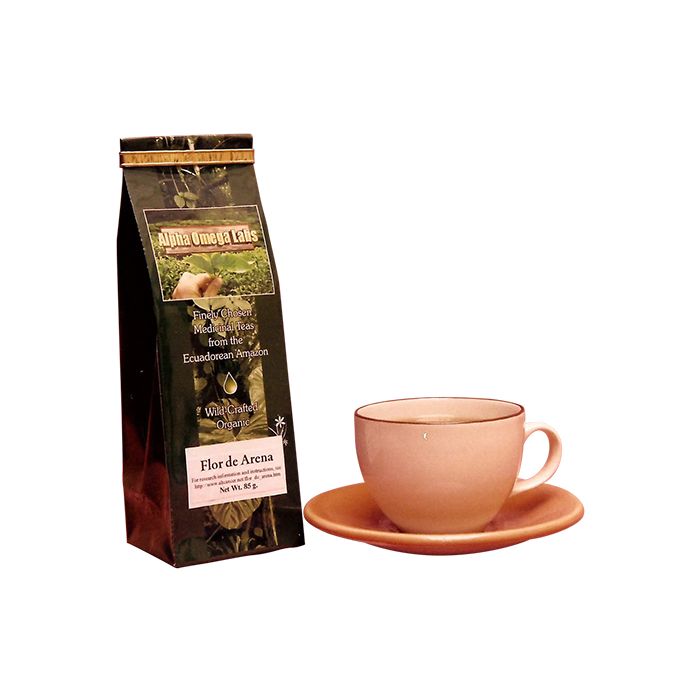Ground Leaves & Flowers of Flor de Arena. Ground tea leaves / flowers: 85 gr. (net wt)
Makes Over 5 Gallons of Tea (Using 4 g. per liter)
Benefits: Gout / Gastric - Urinary - Nervous System Cleansing
Latin (botanical) Name: Tiquilia paronychoides
Common Name: Peruvian Sand Flower
Summarized Description: Flor de Arena - ("sand flower" in Spanish, the name due to its somewhat grey, ashen characteristics when dried and cut) -- is a native of both the Peruvian coastal areas and Andes, where we have it wildcrafted. It is a member of the borage family (Boraginaceae) and grows in drier areas. It is, of course, a traditional. Additional common names include Hierba Blance ("white herb") and Te Indio ("Indian tea"). Among the Peruvian herbalists we work with, this herb is one of the most commonly used. Despite its lifeless appearance, Flor de Arena is full of tannins, alkaloids, flavinoids and other phytochemicals that contribute to its unique medical properties. [See analytical phytochemical study (Spanish - 2002)] This product can be used as tea using the instructions below, and it also lends itself to encapsulation by experienced end users.
Uses and Protocols:
I. Preparation --- if you can boil water, you can make this product: Professional herbalists will recognize this as an infusion.
- Boil one liter (a little more than four cups) of purified or distilled water.
- Pour one teaspoon (about 4 grams) of Flor de Arena into the boiling water.
- Boil on low heat for six to eight minutes.
- Pour entire mixture into a storable, non-reactive container, seal it (i.e. with lid) and let it sit overnight.
- Drink one cup either one hour before or after each meal -- never with the meal.
- Consume until indication is treated.
Contraindications: None indicated.
Ethnobotanical Dosage / Usage: Flor de Arena is a traditional medicinal herb native to Peru, where we have the plant wildcrafted.





